(MENAFN- Asia Times) SEOUL – The visit of the UK's HMS Queen Elizabeth carrier strike group (CSG) to the Korean peninsula has got underway with less of a bang and more of a whimper.
At a time when China is acting as a global economic engine for the world's stuttering recovery from Covid-19 and casting an ever-longer shadow across East Asia, the UK's gunboat diplomacy in East Asian waters has been considerably more prudent than it was during the Mediterranean and Black Sea phases of its deployment.
Both London and Seoul appear more reluctant to irk Beijing than is their joint ally, Washington, which last week sent two ships through the strategic Taiwan Strait to Beijing's displeasure.
Against this backdrop, Covid-19 may have provided a face-saving solution for both parties. A planned port call by the CSG to South Korea has been called off and the ongoing drills are low-key.
More unusually, neither US units embedded with the CSG nor those based in South Korea are taking part in the exercises.
Brexit Britannia flexes new muscle The high-profile voyage of the Queen Elizabeth, which left her home base in May, has been hailed in the UK as a showcase of the world-ranging muscle behind a new, post-Brexit“global Britain.”
“The presence of the UK Carrier Strike Group in the Indo-Pacific is a powerful demonstration of the UK's commitment to deepening diplomatic, economic and security-based ties in the region,” the British government said.
In the region, the CSG has undertaken exercises with the navies of Malaysia, Singapore, Thailand and the US and has also visited Guam. However, the voyage of the British-led multinational flotilla has been overshadowed by a massive humiliation for Western militaries: The fall of Kabul to the Taliban after a 20-year conflict.
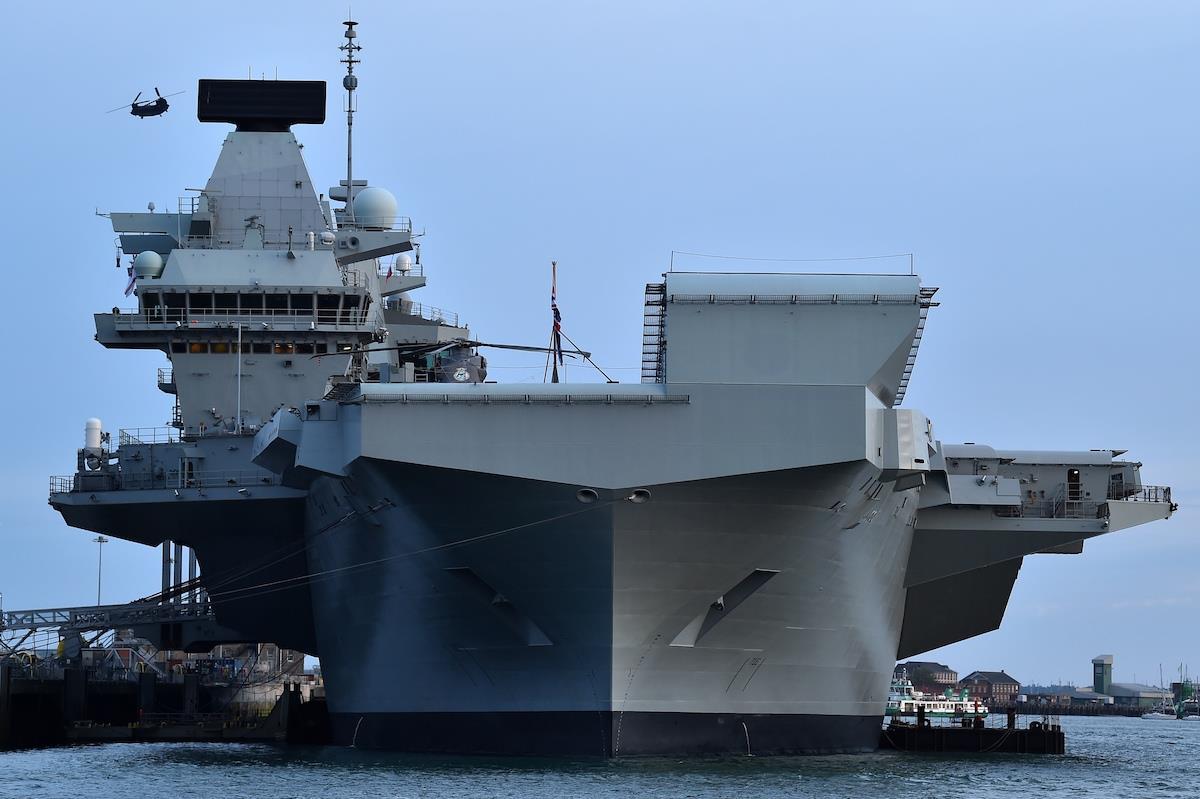
The new British aircraft carrier Queen Elizabeth en route to Asian waters on her first operational deployment. Photo: AFP / Glyn Kirk
The CSG comprises nine ships, 32 aircraft and one submarine and is manned by 3,700 sailors, aviators and marines. US and Dutch warships are in the carrier's escort group, and the bulk of the F35s on her deck have US pilots.
The subordination of US assets to British command suggests both US political approval and close tactical interoperability.
The 65,000 tonne, conventionally powered Queen Elizabeth is not quite as big, butch and hairy as the 100,000 tonne nuclear-powered Gerald Ford-class US Navy carriers. Still, as the crown jewel of the Royal Navy, the GBP3 billion man-of-war showcases cutting-edge air and sea power-projection capabilities.
And she certainly filled a gap in the cash-strapped British forces. Prior to her 2021 cruise, the Royal Navy had been without operational aircraft carriers – the ultimate admirals' toy – since 2014.
Poking the bear, evading the dragon In the Mediterranean, the CSG conducted airstrikes against Islamic State in Iraq and Syria.
In the Black Sea, a British destroyer from the group conducted a freedom of navigation exercise, or FONOP – sailing within 12 nautical miles of a disputed territory – off the coast of Russia-held Crimea.
The CSG has behaved with greater circumspection in East Asian waters. Given Chinese capabilities – Beijing controls weaponized islands in the South China Sea, and deploys two aircraft carriers with a third under construction – that looks sensible.
Just after the CSG entered the South China Sea, state-run tabloid Global Times – a media known for its kinetic editorial stance – warned:
“We advise US allies to be particularly cautious….they must be bluntly told that if their warships rampantly behave as the US military does in the South China Sea, they will more likely become an example of China defending its sovereignty and territorial integrity – just as a popular Chinese phrase indicates: 'To execute one as a warning to a hundred.'”
Neither the Queen Elizabeth nor its sub-units conducted FONOPs off China's weaponized islands in the flashpoint South China Sea. Nor has it traversed the Strait of Taiwan, which Beijing sees as particularly sensitive.
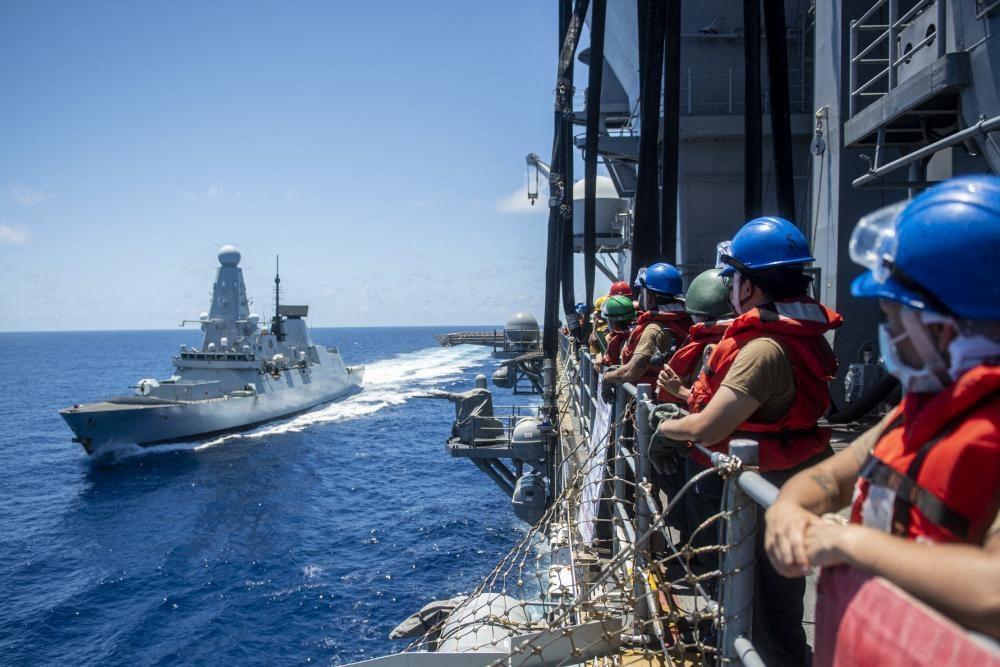
USS America conducted a historic bilateral fueling-at-sea with British Royal Navy destroyer HMS Defender while operating with elements of the HMS Queen Elizabeth Carrier Strike Group in the Philippine Sea on August 24. Photo: AFP / EyePress News
According to Hong Kong media , the Chinese military was“satisfied” with the British-led CSG's activities in the South China Sea.
For Whitehall mandarins, both push and pull factors are at work.
On the one hand, China has been behaving with increasing assertiveness across the world, is powering up its armed forces, and has appalled the UK with its stance on Hong Kong. On the other, post-Brexit Britain is seeking to upgrade trade with partners beyond the EU.
For all these reasons, Whitehall may have decided that despite the bravado surrounding the carrier, which carries two squadrons of top-tier F35s stealth fighters,“poking the Chinese dragon” was not in Britain's best national interests.
Apparent British circumspection toward a country that is both a regional hegemon and an economic superpower is reflected, indeed greatly amplified, in the nation the CSG is operating off today.
Circumspect cruise South Korea – having suffered heavy economic retaliation from China after it permitted the deployment of US anti-missile systems on its soil in 2017 – has already learned to be extremely careful around Beijing's strategic touchiness.
In this vein, Asia Times understands that there had been friction between the Ministry of National Defense and the presidential Blue House in the run-up to the CSG visit.
While military officials have been keen to see the new carrier up close via a port call, and there were hopes of marine drills on land, the Blue House, ever wary of triggering China, has been lukewarm.
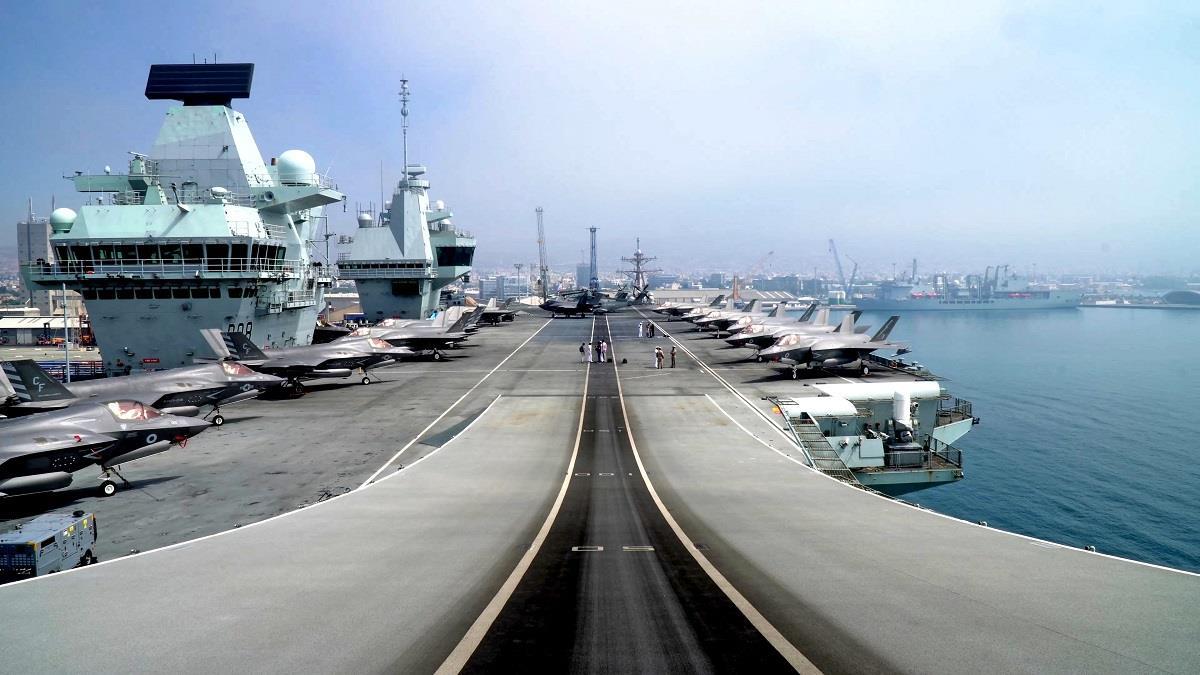
The take-off ramp of HMS Queen Elizabeth aircraft carrier moored in the new port of Cyprus' southern city of Limassol. Photo: AFP / Roy Issa
In the event, Covid-19 looks convenient.
South Korea is struggling to contain the Delta variant and is under its strictest ever social distancing guidelines. There are reported Covid infections – but no hospitalizations – aboard the visiting flotilla. As a result, a port call to Korea's second city, Busan, was called off on August 24.
Even so, naval exercises started on Monday and are due to continue off Busan on the southeast of the peninsula through Wednesday. The location of the drills appears shrewd.
Exercises in the Yellow Sea, off the western coast port of Pyeongtaek, home to a massive US base, would be sensitive for China and possibly for North Korea.
Likewise, exercises off South Korea's Jeju island, home to a domestic naval base, would also risk peeving China. Jeju is perfectly situated to monitor the egress of naval units from the Yellow Sea, home to key Chinese ports, bases and naval dockyards.
“This part of the world is very sensitive, everybody lives pretty close by, and when you have that kind of proximity, you want to respect personal space,” Chun In-bum, a retired South Korean general, told Asia Times.“Unfortunately, sometimes the biggest neighbor forgets to do that – but that is the neighborhood Korea lives in.”
Unusually on Monday, Seoul's Ministry of National Defense spokesperson told reporters that no US assets would take part in the joint exercises.
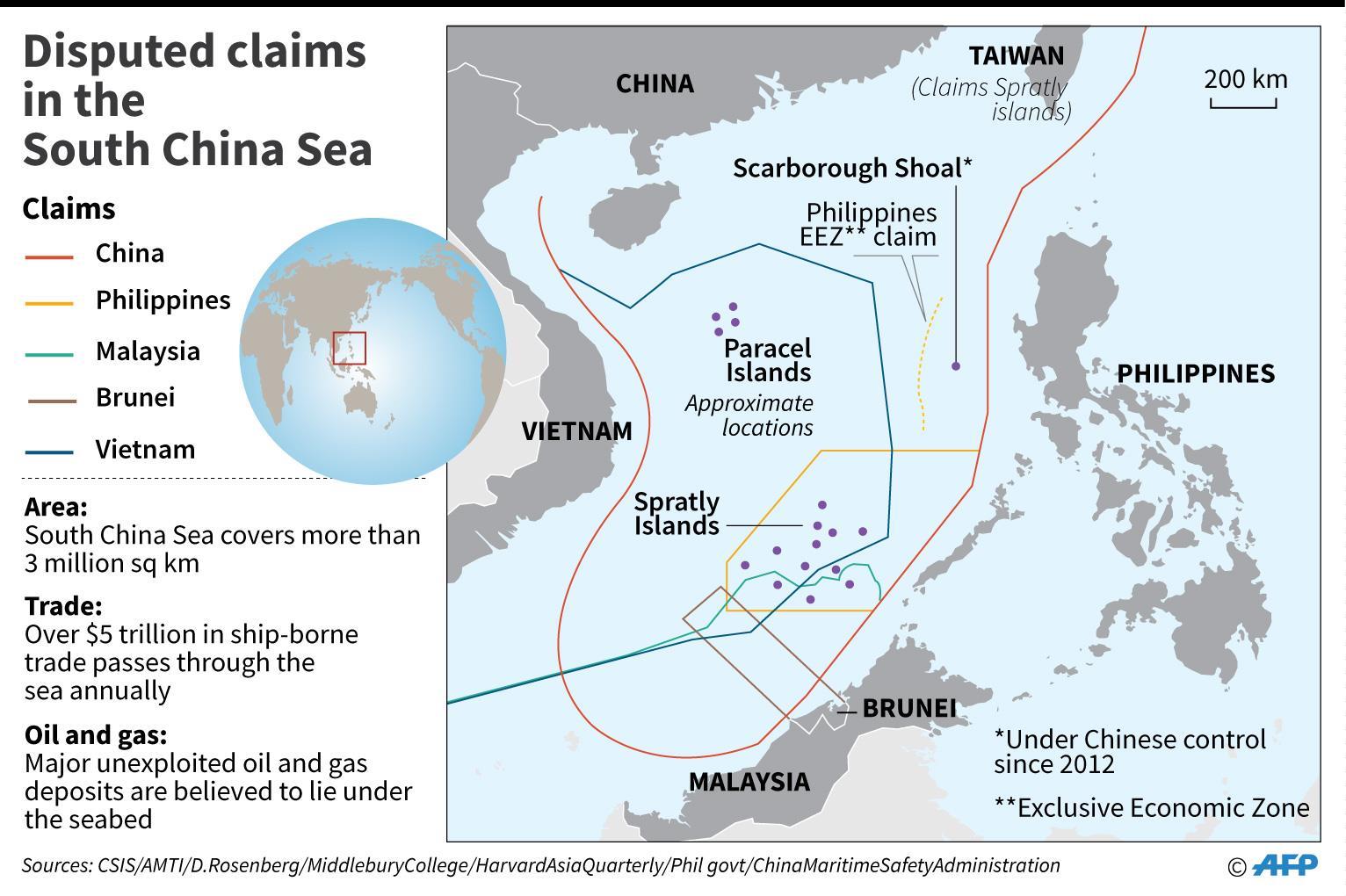
“That caught me off guard,” admitted Chun, who said he had no information on the surprise announcement.
Chun assumed that the drills would be based on humanitarian and anti-piracy scenarios, rather than kinetic naval operations.
“We can respect China's concerns, and at the same time achieve our purposes of building standard operational procedures, gaining experience, enhance mutual understanding,” said Chun.“All these things are benign in nature but can be used in contingencies.”
Distant friends The fact that the CSG's first operational cruise is to the Far East – its ultimate destination is Japan – is a sign of increasing British interest in a part of the world that is strategic in both economic and security terms.
But while post-Brexit London may wish to extend its influence eastward at a time when key ally the US is also encouraging stronger ties between democracies in Western Europe and East Asia, South Korea-UK defense ties remain distant.
The UK dispatched the second largest contingent to the UN Command, the US-led force that fought for South Korea in the 1950-53 Korean War. That conflict, with China as the key combatant against the UN Command, remains the bloodiest London has fought since World War II.
Despite this, and despite London's ongoing membership in the UN Command, South Korea and the UK are not bound by any formal alliance; the obligations of all UN Command“sending states” to South Korea in the even of renewed hostilities are vague.
Moreover, the UN Command – which offers the US eyes on the crossing points of the Demilitarized Zone, and, moreover, maintains depot arrangements in Japan – has not been popular during the Moon Jae-in administration. Some non-US troops assigned to the unit have even faced administrative obstacles from Seoul officialdom.
Even so, since the drawdown of British involvement in wars in Afghanistan and Iraq, British units have been traveling to South Korea to scope out the ground and to get a closer look at a large, conscript military that dwarfs the professional UK force.
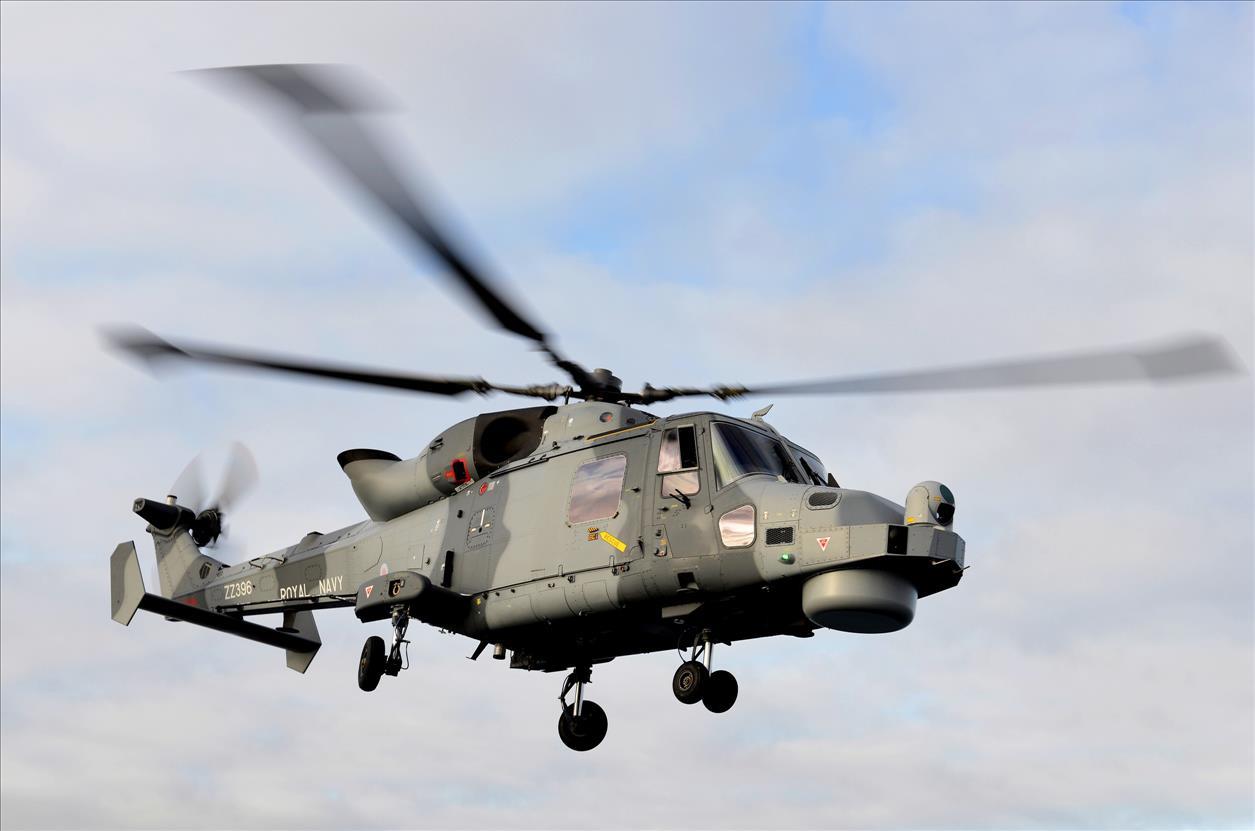
Britain and South Korea both operate UK-made Wildcat helicopters. Photo: UK Royal Navy
British Army battalion battlegroup staffs have traveled to South Korea to join US and local forces in annual spring military drills. Those visits were halted by the agreement between Donald Trump and Kim Jong Il to suspend the drills in 2018, and subsequently by Covid.
It is unclear when, or if, they will resume.
Visits by British units to the country to commemorate key anniversaries of the Korean War in 2020 and 2021 were put on hold for the same reason, as has a tour of the country by the British Staff College.
The main military-military cooperation is naval, in the anti-submarine helicopter space. The South Korean Navy operates British Wildcat helicopters, and there is close cooperation between related units.
Multiple models of the latest British naval helicopters are aboard the Queen Elizabeth, and in July, visiting British Minister of Defense Ben Wallace said that the Royal and South Korean navies are in talks to share experience in operating aircraft carriers.
There are widespread rumors in South Korea about the acquisition of an F35 aircraft carrier. A source at the Ministry of National Defense told Asia Times that no acquisition plan has been confirmed, nor has the type or size of the vessel.
One solution would be the conversion of existing helicopter landing ships, a model pioneered and pursued by Japan's Maritime Self Defense Force.
But there are more ambitious ideas. In June, the world's biggest shipbuilder, Hyundai Heavy Industries made public a design for a dual-island aircraft carrier with a take-off ramp – the type pioneered by the Queen Elizabeth class.
“Our navies operate similar complements of F-35 aircraft and Wildcat helicopters, as well as many other platforms,” said Brigadier Mike Murdoch, the UK defense attache in Seoul, in a statement sent to foreign reporters.
“There is thus already a solid infrastructural basis for our partnership, and in the coming years the Royal Navy plans to maintain a regular deployment to the region.”
All this suggests the possibility of defense consulting and sales as well as interoperability between the two mid-sized powers.
A regional footprint? The CSG's next port of call is Japan's China-facing port of Sasebo. Units will subsequently join“Exercise Bersama Gold,” which marks the 50th anniversary of the Five Powers Defence Arrangement, alongside Australia, Malaysia, Singapore and New Zealand.
However, despite erroneous reporting in some British media, the CSG will not be permanently stationed in East Asian waters.
Indeed, the Royal Navy, which is particularly short of frigates and destroyers, has no permanent patrol presence in East Asia waters. Although it has sent a number of surface ships on ad hoc deployments in recent years, there was no permanent patrol presence.

A Royal Navy seaman looks on while standing aboard the aircraft carrier HMS Queen Elizabeth while moored in Cyprus' southern city of Limassol on July 1, 2021. Photo: AFP / Roy Issa
That changed in July, when Whitehall announced that two small Royal Naval offshore patrol vessels, the HMS Tamar and HMS Spey, will be based in the region
The naval base at Singapore, where the Royal Navy maintains a small naval party tasked with logistics and fueling, might act as a convenient home for the vessels. Sasebo or Guam might also be conceivable homes for the ships.
However, Asia Times understands that they will not have a permanent base in the region, and will fly in rotational crews of sailors and Royal Marines from the UK.
The modest UK naval commitment did not impress Global Times.
“The UK simply does not have the ability to reshape the pattern in the South China Sea,” the newspaper editorialized. “To be precise, if the UK wants to play the role of bullying China in the region, it is demeaning itself. And if there is any real action against China, it is looking for a defeat.”
MENAFN31082021000159011032ID1102718069